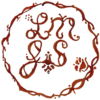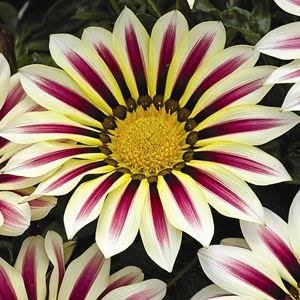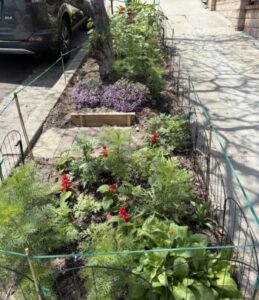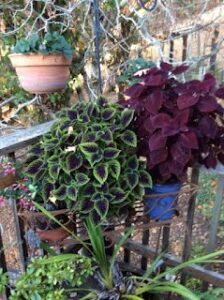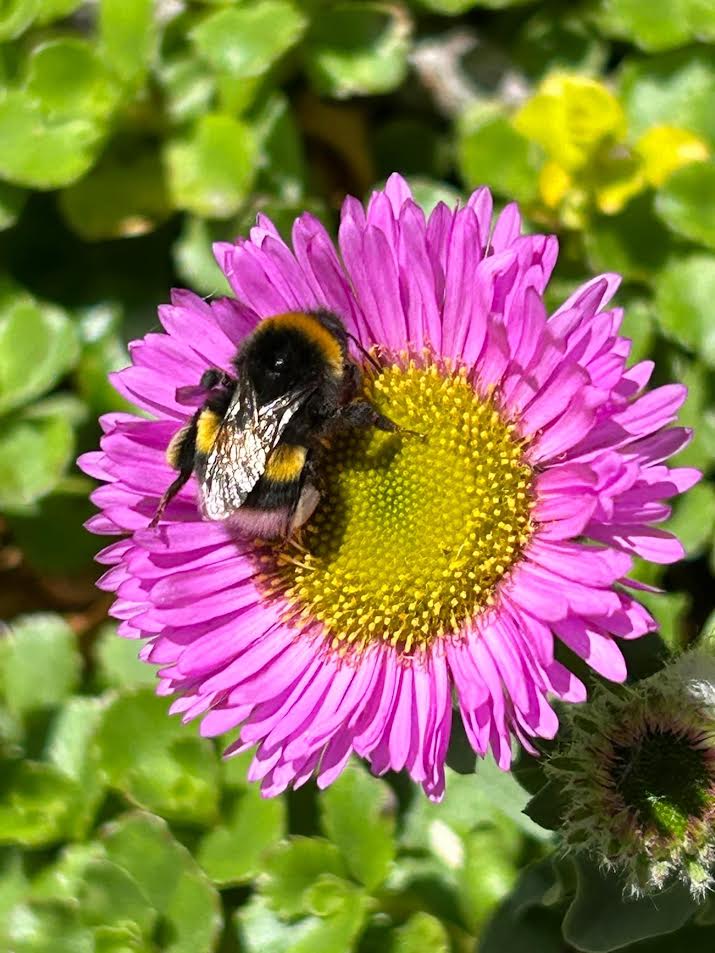
Remember Meg Ryan waxing poetic about Daisies in the movie “You’ve Got Mail”? She proclaimed them to the most cheerful of flowers. Cheerfulness is just one of the Daisies many outstanding qualities. They are all part of the Asteraceae (Compositae) Family containing 30,000 + species of every size, shape and form of Daisy.
The photo above is a Seaside Daisy and shows one of the characteristic things about Daisies- a multitude of tiny flowers in the center area with the rays (normally thought of as petals) on the outside. The busy bee in the photo gets pollen from not just one flower but perhaps hundreds when visiting a single Daisy.
One thing that enamored me to Daisies (besides being so darn cheerful) is that Deer shun many plants in the Asteraceae Family. One of my client’s mentioned that the Deer ignore the Daisies in her garden. And sure enough there is a large group of Daisies that are low water requiring and have somewhat abrasive leaves. I haven’t tried tasting them to see if they taste terrible too, making them undesirable to Deer! Here is a little list of some Daisies I have used in low water and Deer “proof” Gardens that you might like to try.
- Erigeron karvinkianus- Santa Barbara Daisy (morning sun only)
- Osteospermum- African Daisy many interesting colored hybrids
- Felicia amelliodes- Blue Marguerite
- Euryops pectinatus- Golden Daisy Shrub
- Coreopsis- many hybrids
- Chrysanthemum maximum- Shasta Daisy
- Gazania- many hybrids
- Astericus (Pallenis) maritimus- Gold Coin Daisy
- Bidens- several colors available
- Arctotheca
- Arctotis- needs rocky soil and seems to prefer Coastal areas
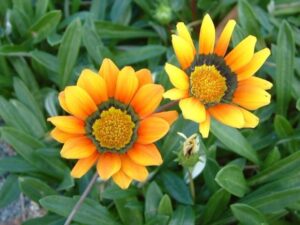
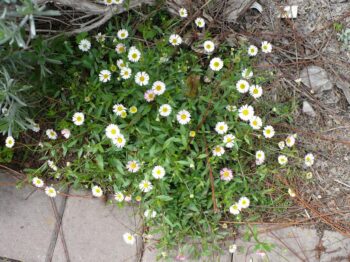

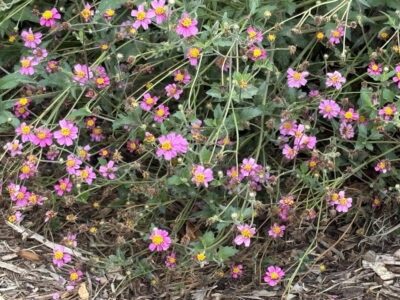
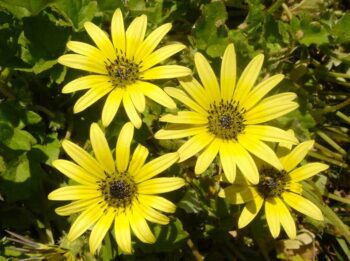
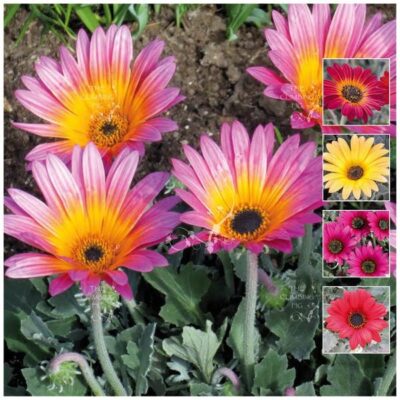
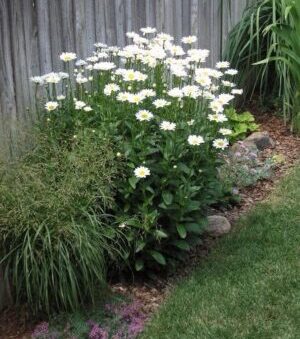

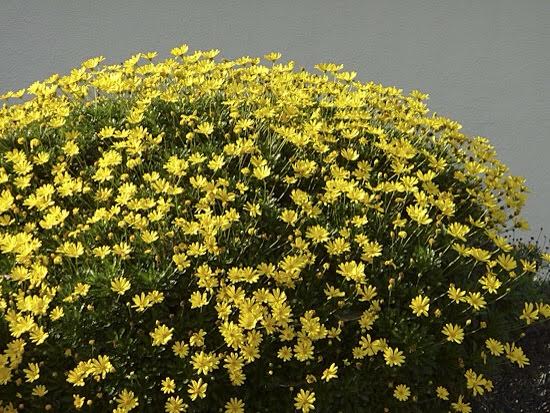

Interesting side note about Shasta Daisies. They were developed by Luther Burbank as one of his first introductions. He crossed many species of Daisies until he found a species that is suitable as a cut flower but is tough and resistant to hot summers, moderate water and lasts for many years in the garden.
Cutting Daisies to use in Vases, as Corsages, or to float in Bowls
In fact, many Daisies are excellent cut flowers and last well in vases. The classic Florist’s Mum or Chrysanthemum has numerous colors and shapes. When I was studying Horticulture in College, I made a corsage with a Florist Mum flower and a bit of leather leaf fern. I brought it back to the dorm and set it on my desk and it lasted a whole week with no water! I was astounded. Here are a few Daisies that are used as cut flowers.
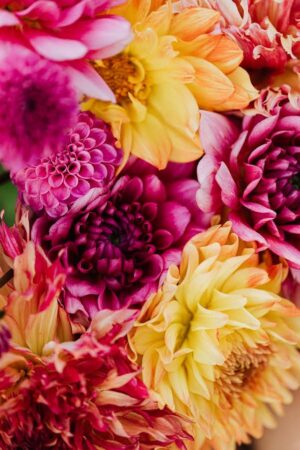
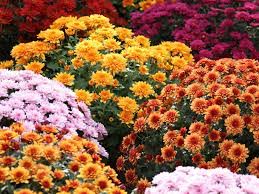


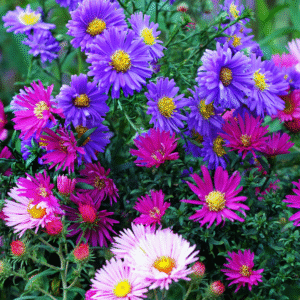

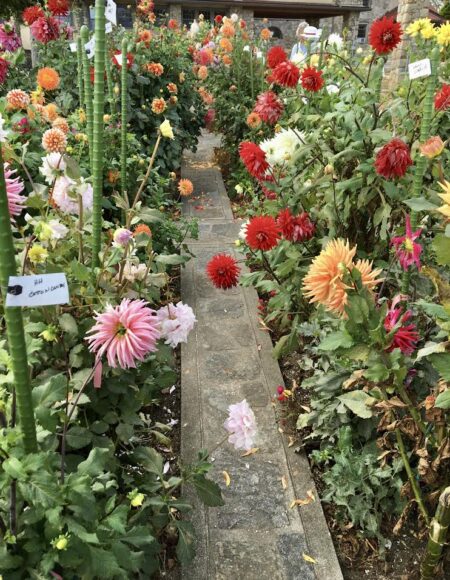
Dahlias, like Chrysanthemums, have a very wide range of colors, shapes and sizes. They are grown from tubers and prefer rich soil with good drainage and a moderate climate. My Uncle grew plate size Dahlias in his garden in Pacific Grove near Monterey, California. He donated arm loads of his gorgeous flowers to the church for decorations and vases. His soil was sandy and he amended with chicken manure and compost. As you can see in the photo, it is important to stake tall flowers to avoid them tipping over or breaking.
When I am visiting on the East Coast, the arrival of hundreds of blooming potted Garden Mums signals the beginning of Autumn- along with the pumpkins! Towns and Cities have loads of Daisies set along the streets in pots or planted in ground. Asters, Echinacea and Sunflowers are still blooming in the Fall livening up perennial borders.
Daisies for Perennial Borders and Garden Beds
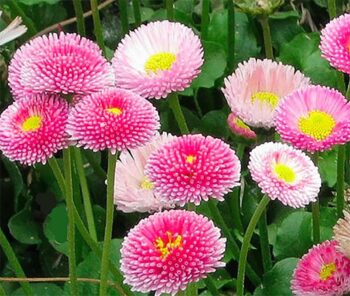
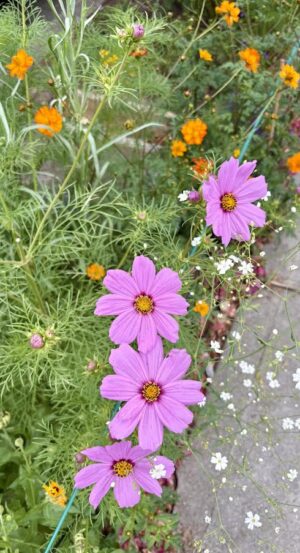
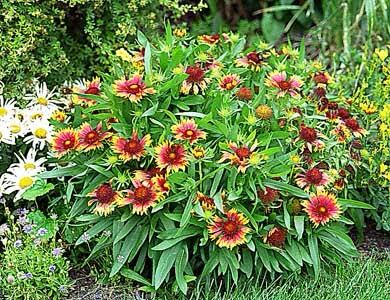
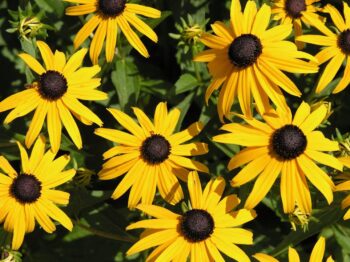
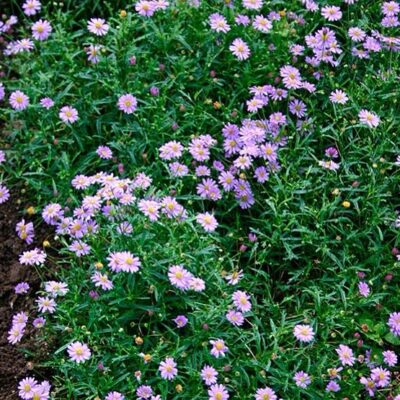




Flower borders and garden beds benefit from the use of some Daisies. They have a long bloom cycle, need moderate to low water and bloom at varied times throughout the growing season. The Bees and Birds like them too! Marguerites get woody and tired after a few years so replace them as they die out. I noted the annual Daisies that can be grown from seed. With all Daisies, it is a good idea to dead head the plants cutting back the dead flower heads and stalks leaves the main plant only. This will rejuvenate the plants so they can bloom again or over winter to start blooming again in spring.
Medicinal Daisies
Most of us are familiar with the advertisements about Echinacea as a medicinal plant. Other Daisies that are used medicinally include Bellis perennials which is used for skin conditions and other ailments plus is edible. Gerbera Daisy and Euryops are used in traditional medicines for wound healing, skin conditios, digestive support and respiratory issues. Leucanthemum vulgare- Ox-Eye Daisy aids whooping cough, asthma and other types of coughs. Also used as a poultice for healing bruises. Interesting. You can make a daisy chain too for your mental health! And have some yummy Sunflower seeds for a pick me up. Sunflowers are a great example of a Daisy that has multiple products made from its seeds plus makes a great cut flower.
I pulled this information off the web and it worries me a bit that not all the pages list the Botanical Name of the Daisy they are referring too. Since there are hundreds of types of Daisies I would be wary of using any Daisy without the direct information on type and amount that is to be used. It looks like Bellis perennis is an edible type and is listed by Botanical name in many of the information sites so it is probably a good call that is a safe Daisy to use but consult with a Doctor or Herbalist before use.
It tickles my funny bone that many of our garden plants and some weeds are able to cure our ills. Mostly because of the thriving pill companies producing synthetic chemicals to package up and be doled out. Meanwhile, our gardens are teaming with medicinal plants like Hypericum, Echinacea, Bellis perennis, Ginkgo biloba, Chamomile, Dandelions, Calendula, Lavender, Lemon Balm and Aloe vera etc…………… We were given everything we needed to live a splendid life on Earth but our many civilizing efforts have left us ignorant of what the natural world has waiting to be used at no cost. Sorry for the soapbox just a small comment on modern life.
Native California Daisies

California has a huge group of native Daisies from small flowers like Gold Fields covering the hills with California Poppies to tall native Sunflowers. Tidy tips are a common hillside wild flower with yellow flowers tipped in white- definitely cheerful! Yellow seems to be the most common color for Daisies but with hybrids and plants introduced from across the globe almost any color can be found in Daisy form.
There is a wide range of sizes too. From ground covers to perennials, annuals and shrubs and some tree like plants that have Composite or Daisy type flowers the Asteraceae family seems limitless- a Galaxy of Daisies!
I found another nice article on Daisies you might enjoy on the Backyard Nature site-
